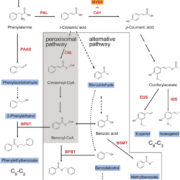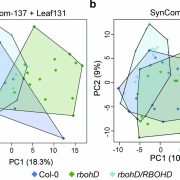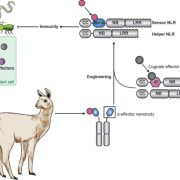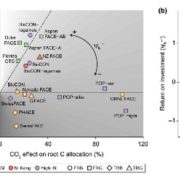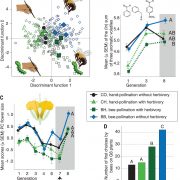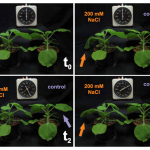Plant immunity is wired differently in different plants (New Phytol)
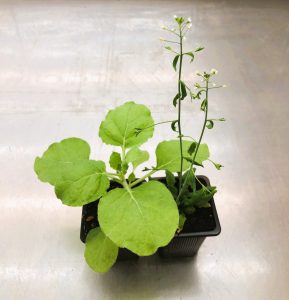 In plants, microbial invasion is sensed by membrane-bound and cytoplasmic receptors. Our knowledge on the immune signaling that follows microbial recognition is mostly derived from studies on Arabidopsis thaliana. In this plant, receptor activation triggers immune responses that are distinct for each subgroup of receptors. However, recent findings using this model plant have shown that signaling from membrane-bound pattern recognition receptors (PRRs) and cytoplasmic TIR-domain containing NLR-type receptors (TNLs) is linked through the function of the lipase-like protein EDS1. Studies in the solanaceous plant N. benthamiana suggest that in this plant EDS1 works slightly differently that the one in Arabidopsis. In a recent report, Zönnchen et al. looked at functions of PRRs and TNLs in N. benthamiana. Their results suggest that, as for its Arabidopsis counterpart, EDS1 in N. benthamiana is required for TNL signaling, although an intact catalytic triad is dispensable in both plants. Zönnchen et al also found that in contrast to the Arabidopsis system, EDS1 in N. benthamiana seems not to be involved in immune signalling of PRRs. This comparative study highlights the diversity of plant immune responses. (Summary by Mariana Schuster @MariSchuster) New Phytol 10.1111/nph.18511
In plants, microbial invasion is sensed by membrane-bound and cytoplasmic receptors. Our knowledge on the immune signaling that follows microbial recognition is mostly derived from studies on Arabidopsis thaliana. In this plant, receptor activation triggers immune responses that are distinct for each subgroup of receptors. However, recent findings using this model plant have shown that signaling from membrane-bound pattern recognition receptors (PRRs) and cytoplasmic TIR-domain containing NLR-type receptors (TNLs) is linked through the function of the lipase-like protein EDS1. Studies in the solanaceous plant N. benthamiana suggest that in this plant EDS1 works slightly differently that the one in Arabidopsis. In a recent report, Zönnchen et al. looked at functions of PRRs and TNLs in N. benthamiana. Their results suggest that, as for its Arabidopsis counterpart, EDS1 in N. benthamiana is required for TNL signaling, although an intact catalytic triad is dispensable in both plants. Zönnchen et al also found that in contrast to the Arabidopsis system, EDS1 in N. benthamiana seems not to be involved in immune signalling of PRRs. This comparative study highlights the diversity of plant immune responses. (Summary by Mariana Schuster @MariSchuster) New Phytol 10.1111/nph.18511


